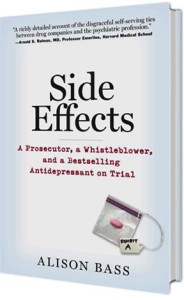A year ago, the Department of Health and Human Services proposed new rules governing the disclosure and handling of financial conflicts of interest by medical researchers who receive federal funding. The more stringent rules were prompted by Congressional findings that prominent NIH-funded researchers had failed to disclose significant consulting and other income, violating the agency’s own regulations. The new rules would, among other things, require universities to post on a publicly available website information describing the specific financial conflict of interests of their federally funded researchers, according to Sheldon Krimsky, the Tufts University ethicist who wrote about the new rules in an article for Ethics in Biology, Engineering & Medicine last year.
Why is this so important? Because the current system of disclosure has proven woefully inadequate in providing consumers with information about financial conflicts that can skew medical research and adversely affect patient care. According to a 2008 Inspector General’s report, the vast majority (93 percent) of institutions reporting conflicts of interest to the NIH did not describe the nature of their researchers’ conflicts; in addition, 90 percent of the universities relied solely on the researchers’ discretion in reporting conflicts, which is why there was so much failure to disclose in the first place.
Here’s an interesting case in point. Dr. Helen Mayberg, a neurologist at Emory University School of Medicine, has testified in more than 50 death penalty cases, always for the prosecution in an attempt to discredit any mitigating evidence of brain damage in defendants on death row. Indeed, in a 2009 transcript (State of Connecticut vs Richard Roszkowski), Mayberg acknowledged that she has probably testified exclusively for the prosecution in more recent death penalty cases than any other doctor in the country, except perhaps Park Dietz, known by some as Dr. Death for his decades of testifying on behalf of the prosecution in high-profile cases.
While Emory officials say Mayberg has reported her expert witness work to them, they are under no obligation to disclose the full range of her extra-curricular activities to the public under existing federal rules. As a result, very few of Mayberg’s colleagues or patients know of her extensive testimony in death penalty cases. And Mayberg goes to some lengths to keep her lucrative sideline out of the public eye.
For example, she had a friend (David Dobbs)* scrub her Wikipedia page of any reference to her death penalty work or her previous failures to disclose other conflicts of interest; here’s a more comprehensive earlier version of her wikipedia page pre-scrubbing. I blogged here about Mayberg’s collaboration with former psychiatry kingpin Charles Nemeroff and her previous failure to fully disclose conflicts of interest involving her work with deep brain stimulation, a controversial technique for treating depression.
Also missing from Wikipedia is the fact that she has so angered other neurologists with her death penalty testimony that they tried to get her drummed out of the American Neuropsychiatric Association. As one prominent neurologist says, it’s not just that Mayberg always testifies for the prosecution in death penalty cases — in effect, “trying to kill people” — but that she goes to considerable lengths to rebut defense experts, often introducing inaccurate information and contradicting herself in the process.
“She uses a lot of maneuvers to say that [defense] findings in brain scans are not valid, yet at the same time, she’s written articles saying the brain scans are valid,” says the neurologist in the Washington, D.C. area who has written extensively about brain damage. “In fact, she uses the same brain scans that she says are invalid in the courtroom to diagnose depression in people whom she then treats with deep brain stimulation.”
According to Krimsky, Mayberg’s death penalty work is considered a significant financial conflict of interest under both the old and new NIH rules. And if the new rules are adopted, she would not only be forced to disclose the extent of her death penalty work but also the money she makes from it. According to lawyers who do for this kind of work, Mayberg makes as much as $500 an hour testifying for the prosecution in death penalty cases. And since she travels all over the country to testify, including to notorious death penalty states like Texas and Alabama, those hefty hourly fees add up.
In response to my query about how many death penalty cases Mayberg has disclosed since she came to Emory in 2004 and how much money she’s made from this sideline, all Emory officials would tell me is that “she reported five instances of expert witness activity in 2009.” You do the math.
*Correction: David Dobbs did not scrub Mayberg’s wikipedia page; he merely added a link to a feature he had written about her for the New York Times magazine.



For all you write about Mayberg, I’m surprised you’ve written nothing about Elizabeth Loftus, who has testified in far more civil and criminal cases, with little more disclosure.